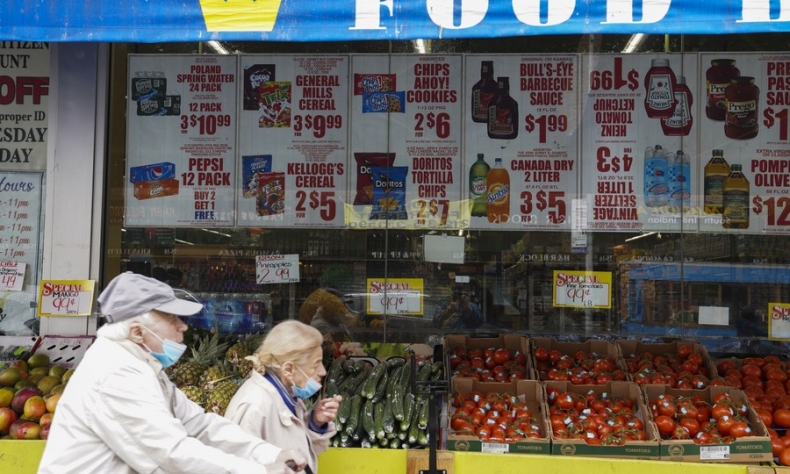The U.S. Fight Against Inflation: the China Factor

If the U.S. hopes to get out of the woods, picking up China-U.S. cooperation will prove to be the right thing to do as well as an effective way to curb inflation.
Despite a recent pullback in domestic inflation, the U.S. Federal Reserve (Fed) on July 26 raised its key interest rate by a quarter of a percentage point to a range between 5.25 and 5.5 percent, marking the 11th rate hike since March 2022.
Since 2021, the U.S. has seen its consumer price index, which measures the monthly change in prices paid by consumers, rise continuously, at one point even hitting a 40-year record, at 9.1 percent.
Incessant inflation was eating into consumers’ purchasing power and so, to rein in inflation, the Fed had to take a monetary-tightening approach by frequently raising interest rates.
Contributing factors include excessive money printing in the past few years leading to excessive liquidity, as well as manufacturing moving to other countries, thus increasing the gap between the domestic supply and demand of goods. But one other factor responsible for its current inflation has been the trade war against China that began in 2018.
Both economies have become increasingly intertwined over the past four decades and China’s cheap labor for years helped fill the gap left by U.S. manufacturing. Mountains of cheap goods were exported to the latter, satisfying American consumer demand. This win-win cooperation helped promote economic growth in both countries.
China’s rapid economic growth has unsettled some U.S. politicians, who perceive China’s development as squeezing the U.S. In a bid to contain China’s development, in March 2018, the Donald Trump administration began to slap extra tariffs on goods imported from China, with an additional rate of up to 25 percent.
The successive Joe Biden administration continued this policy. Over the past five years, added tariffs have covered approximately 85 percent of the goods imported from China, ranging from premium beer, musical instruments and electronic products to children’s toys.

China’s development aims to provide the country’s population with better quality of life. A bigger Chinese economy will not threaten the U.S., given the latter’s economic quantity and quality far exceed those of China.
The fallout of the trade war so far has revealed that by launching the conflict in the first place, the U.S. has shot itself in the foot. Unable to correctly evaluate the close economic connection between the two countries, the U.S. wrongly opts to try and strangle China’s development, only to find itself groaning under inflationary pressures, with the extra tariffs imposed on Chinese goods ultimately passed on to U.S. consumers, pushing up prices.
Meanwhile, the Biden administration’s efforts to get rid of China in the global supply chain only hinder the chain’s smooth operation. Many of the consumer goods produced in China that should be exported to the U.S. directly have to be shipped through Southeast Asia and India, fueling inflation in the U.S.
A survey by the U.S. National Retail Federation conducted in May 2022 showed that the most direct and effective way to tame inflation would be to end the trade war. Once the extra tariffs imposed on Chinese goods are lifted, consumer prices will immediately drop by 1.3 to 2 percent, something the Fed’s interest rate hikes cannot achieve.
The U.S. Government’s approach of raising interest rates to combat high inflation is proving much less effective than initially expected. While rate hikes can counter the part of inflation generated by excessive money printing, they cannot address the part stemming from high tariffs.
The trade war, in full swing for five years, is causing both countries one headache after the other. If the U.S. hopes to get out of the woods, picking up China-U.S. cooperation will prove to be the right thing to do as well as an effective way to curb inflation. After all, history has taught us all that in terms of economic and trade relations, the two countries share their wins and bear their losses together. This is a thought worth factoring in.
 Facebook
Facebook
 Twitter
Twitter
 Linkedin
Linkedin
 Google +
Google +










